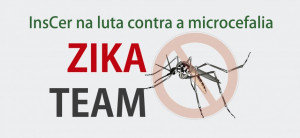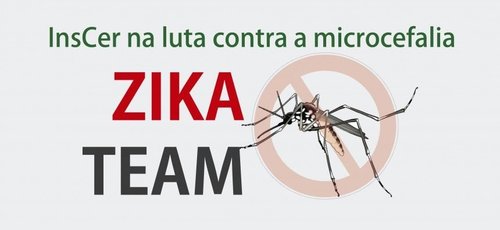Zika Team: diagnosis and monitoring of microcephaly
The Brain Institute of Rio Grande do Sul - PUCRS launched in December 2015 a new research front for an epidemic that scares the country: that of Zika Virus, the main cause of microcephaly cases. According to the latest epidemiological bulletin from the Ministry of Health (reference 27/7/2016), since the beginning of the investigations, 8,703 suspected cases of microcephaly have been reported in Brazil, most of them in the Northeast Region. Of that number, 1,749 cases were confirmed for microcephaly and other nervous system disorders, suggestive of congenital infection in all units of the federation.
Facing the serious situation that spreads throughout the national territory, the director of the Institute, Prof. Dr. Jaderson Costa da Costa, called professionals and researchers from the most varied fronts for the creation of the Zika Team , or “Zika team”. The director himself is a member; pediatrician Humberto Fiori; the neuropediatrician and researcher at InsCer Prof. Dr. Magda Lahorgue Nunes; gynecologist and obstetrician Pedro Zanella; the infectious pediatrician Marcelo Scotta; the researcher in the field of cellular and molecular biology Dr. Célia Carlini; the neuropediatrician Dr. Alessandra Pereira; the neuropediatrician Felipe Kalil; InsCer researcher Dr. Daniel Marinowic and neuroradiologist and researcher at the Ricardo Bernardi Soder Institute.
Costa explains that InsCer can become a reference for studies on prevention, diagnosis and treatment of the disease, from a qualified team and high-tech equipment, important at a time of so much uncertainty regarding the disease. “What we have today is a picture of terrified, panicked women. It is more than just an agent that you can easily eliminate, it is a serious public health problem ”, he highlights. Due to this need, justifies the neuroscientist, the Zika Team is born, with the proposal to act on several fronts. “The best way to fight an epidemic like this or even deal with its consequences is to bring together people from our institution with experience in obstetrics, fetal medicine and other areas, thus guaranteeing a better and more efficient search for solutions”.
For pediatrician and infectious disease Marcelo Scotta, the specialized team to deal with the virus is an excellent opportunity to reveal some mysteries that permeate Zika and its consequences, such as microcephaly. “Every day we receive a series of questions about the disease, such as whether pregnant women can use repellents, whether the woman can become pregnant after contracting the virus, etc. These are questions that we try to answer little by little, everything is very recent essay writing service ”. According to the specialist, one of the major issues is linked to the differentiation of congenital cases of microcephaly (intrauterine) or perinatal (when the contagion would occur soon after birth). “These are different cases that we need to study in depth, even to clarify rumors about the disease”.
Obstetrician Pedro Zanella adds that the recent epidemic may still change ultrasound protocols during pregnancy. "Today we have tests that can be added to the prenatal calendar, requiring routine ultrasounds at 20 weeks and after thirty-two weeks of gestation even at low risk for more efficient monitoring." The group also states that it is necessary to identify subtypes of the Zika Virus, to clarify whether one type of vaccine would be able to immunize the entire population or whether further developments would be necessary. There is also the possibility of examining vaginal discharge in women, as cases of Zika infection through sexual intercourse have been reported.
Know: how is the brain perimeter that characterizes microcephaly determined?
The measurement of the head circumference or head circumference is obtained with a non-elastic and flexible measuring tape. The circumference of the head is measured by placing the tape measure over the most prominent region at the back of the head (occiput) and just above the eyebrows (frontal). The neuroscientist and director of InsCer indicates that the tape is moved up and down until the largest head circumference is obtained. Recently, the Ministry of Health determined that children who have this circumference equal to or less than 32 cm fit in microcephaly cases.
Check out other information that the Ministry of Health already has about the disease *:
What is the Zika Virus?
The Zika Virus (ZIKAV) has two strains of the virus: one African and one Asian. The main mode of transmission of the virus described is by vectors such as Aedes Aegypti. Zika virus fever is described as an acute febrile illness lasting 3-7 days, usually without serious complications and there is no record of deaths. The hospitalization rate is potentially low. The main symptoms are intermittent fever, headache, sore throat, cough and rashes.
How is it broadcast?
The main mode of transmission of the virus described is by vectors. However, the occurrence of occupational transmission in a research laboratory, perinatal and sexual, as well as the possibility of transfusion transmission is described in the scientific literature.
What is the prognosis?
In short, it has been considered a benign disease, in which no death has been reported and self-limited, with signs and symptoms lasting, in general, from 3 to 7 days. Chronic forms of the disease have not been described. There is no specific vaccine or treatment so far.
How can I do prevention at home?
The vector density of the Aedes Aegypti mosquito must be reduced by eliminating the possibility of contact between mosquitoes and water stored in any type of deposit, preventing access by pregnant females through the use of screens / covers or maintaining - reservoirs or any place that can accumulate water, fully covered. In case of alert or high risk of transmission, personal protection through the use of repellents must be implemented by the inhabitants. Individually, you can use clothes that minimize skin exposure during the day when mosquitoes are more active can provide some protection against mosquito bites and can be adopted mainly during outbreaks, in addition to using repellents on exposed skin or clothing.
How to report mosquito outbreaks?
Control actions are similar to dengue, so they are mainly aimed at the municipal level. When the outbreak of the mosquito is detected, and it cannot be eliminated by the residents of a given location, the Municipal Health Department must be called.
What to do if you have symptoms of Zika virus fever?
Seek the nearest health service for guidance.




